지지씨
Fortress As A World Heritage <Fortresses of the World>_1
1. Namhansanseong of Republic of Korea
Located 25km southeast of downtown Seoul, Namhansanseong was originally built as a defense structure. During the Joseon Period (1392-1910), diverse facilities were built here and the walls were expanded to transform it into a temporary capital for use in the event of an emergency. The structure incorporated all the concepts of military defense engineering available at that time, including the castle systems of China and Japan, as the techniques for building castles and fortresses were changing with the adoption of firearms from the West. Since then it has served as a defense facility for the areas close to Seoul, and people have continued to live within the area. Traces of former military, civilian, and religious facilities can still be seen there. The design and construction of Namhansanseong incorporated all the military defense engineering concepts available in Southeast Asia in the seventeenth century. The fortress was built in consideration of the new threat posed by the adoption of firearms from western countries, based on a review of the castle systems of Korea and China. The construction of the fortress was an important turning point in fortress design in Korea. Namhansanseong is a good example of a fortified city. The installation of facilities to enable the fortress to be used as a temporary capital in the event of an emergency was carried out by Buddhist monks in the seventeenth century. The defense of the fortress was also assumed by them.
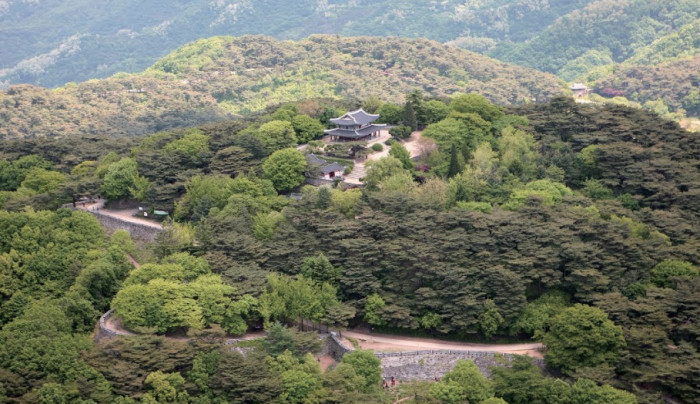
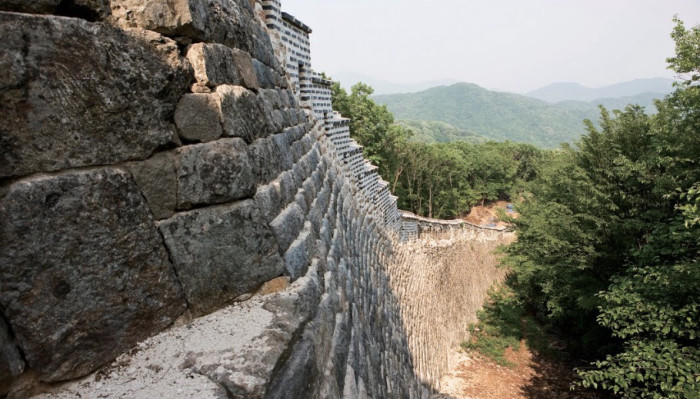
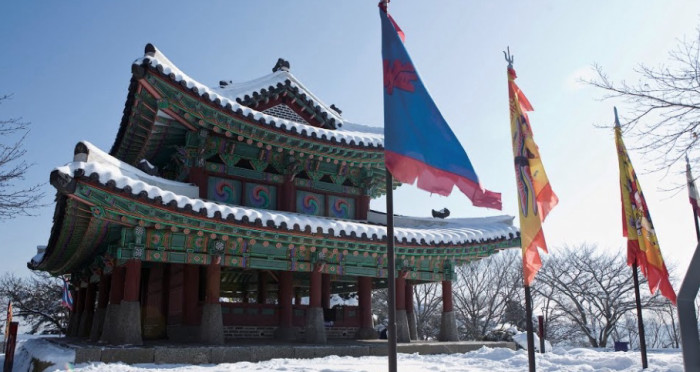
Country : Republic of Korea
Location : Extending across Gwangju, Seongnam, and Hanam, Gyeonggi-do
Inscription year : 2014
2. The Great Wall
The Great Wall of China is a vast defense facility whose construction was begun during the reign of Emperor Qin Shi Huang to defend the country against invasion by northern tribes, and continued right up until the Ming Dynasty (1368-1644). Universally recognized as one of the grandest military facilities in the world, it is a superb architectural heritage, in addition to being a historically and strategically important defense facility. Completed during the Ming Dynasty, the Great Wall of China is an architectural masterpiece of magnificent scale. It is said to be the only manmade structure on the Earth that can be observed from the Moon. It is a perfect architecture that blends in with its natural surroundings. During the Spring and Autumn period, the Chinese built a defensive wall along the country’s northern border, establishing their own methods of construction and spatial structures. China’s expansion became even more conspicuous due to the mass mobilization and movement of people for the construction work. The Great Wall is a living testament to the civilization of ancient China. During the Western Han Dynasty, a part of the Wall in Gansu Province was built by means of soil compaction, which is acclaimed as a unique yet universal method of construction. The Great Wall of China is a complex and encompassing cultural asset built over a long period of time. It is a military structure that has been preserved and maintained for over 2,000 years purely for its defensive purpose. It shows that the skills used in its construction continued to develop amid changes in defense tactics and the political situation. The Great Wall of China has become the most important and symbolic structure in the country’s history. The main purpose of the Wall was to fend off hostile forces and protect Chinese culture from invaders. Diverse stories about the people who were mobilized for the Wall’s construction are contained in Yinma Changcheng Kuhang (飮馬長城窟行) written by Chen Lin in about 200 AD, the poems of Du Fu (712~770), and novels written during the Ming Dynasty.
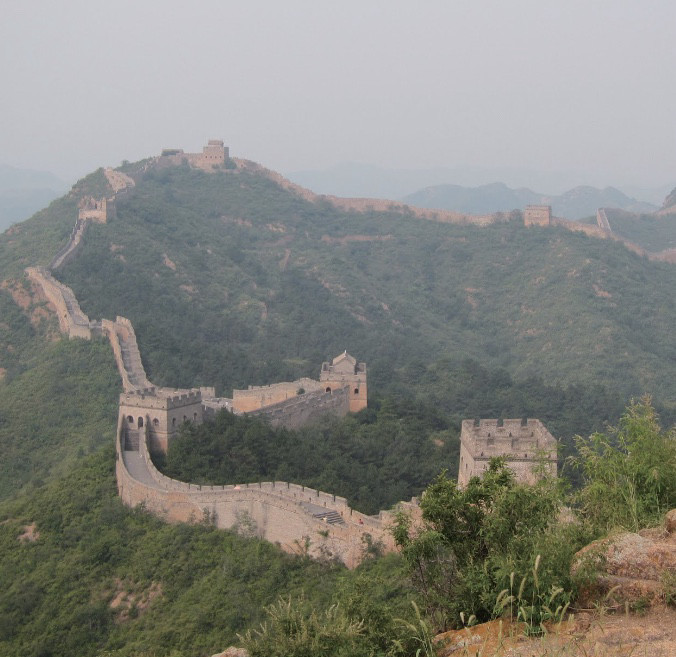
Country : China
Location : Extending across Liaoning, Jilin, Hebei Provinces
Inscription year : 1987
3. Ancient City of Ping Yao
The Ancient City of Ping Yao, which dates from the Han Dynasty (206BC-220 AD), shows how architectural styles and urban planning developed during the dynasty. The well-preserved fortified wall (height: 12m; length: 6.4km) surrounding the city is equipped with six gates and semi-circular bulwarks outside them, four pavilions, and seventy-two watchtowers. More than 4,000 well-preserved houses dating back to the Ming and Qing Periods are still inhabited to this day.
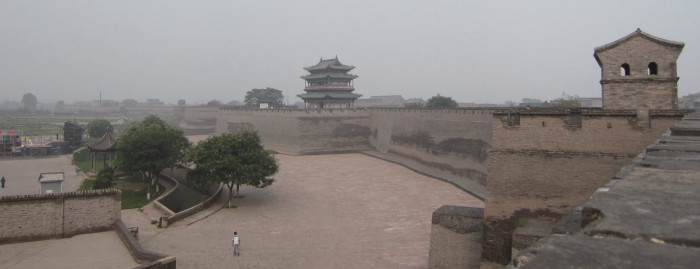
Country : China
Location : Pingyao County, Shanxi Province
Inscription year : 1997
4. Historic Centre of Macao
Macao, which came under the control of Portugal in the mid-sixteenth century, was returned to China in 1999. The Historic Centre of Macao, which is packed with many Portuguese and Chinese-style religious and public buildings, is the place where the local inhabitants had their first contact with Westerners. The area displays numerous traces of the country’s exchanges of culture, architecture, and technologies with western countries. Leading landmarks of the area are a lighthouse and Guia Fortress, which is one of the oldest forts in China. Macao is an area in which exchanges took place between China and Portugal over several centuries in the areas of culture, science, technology, art, and architecture under the special relationship established between the two countries. Macao is an area that has witnessed exchanges between China and western countries since the sixteenth century as a center of activity for trading businesses, missionaries, and scholars engaging in diverse academic disciplines. Traces of those exchanges can be seen in culture conversion featuring the core part of the center. Macao is a fine example of an architectural heritage bearing testimony to the encounter between Chinese and western civilizations that took place over a period of more than 450 years. Former sea routes linking Macao with cities in Portugal attest to this heritage. Macao has long served as a channel for exchanges of culture, religion, science, and technology developed in China and Western countries. Philosophies developed through this process have played a decisive role in pushing ahead with changes in China, including the establishment of an early modern republic.

Country : China
Location : Macao Special Administrative Region
Inscription year : 2005
5. Imperial Palaces of the Ming and Qing Dynasties
in Beijing and Shenyang
The Forbidden City in Beijing served as an imperial palace – and magnificent symbol of the power and authority of the ruler – for five centuries (1416~1911). It consists of 10,000 or so rooms containing numerous items of furniture and artworks, and has beautifully laid out gardens. The Imperial Palace and the heritage objects preserved within its precincts testify to the splendid Chinese civilization of the Ming and Qing Dynasties. The Imperial Palace in Shenyang consists of 114 buildings, including Wensuge Library, built during the Qing Dynasty. It served as the crucial basis of the Chinese dynasties until the relocation of the capital to Beijing. It is a remarkable building containing traces of the cultural traditions of the Qing Dynasty and the northern tribes of China, including the Manchurians. Forbidden City in Beijing and the Imperial Palace in Shenyang are masterpieces of palace architecture. The Imperial Palace in Shenyang, in particular, was an important turning point in traditional architecture and palace architecture of China in the seventeenth and eighteenth centuries. The imperial palaces preserve much ancient furniture and many artworks. Their natural surroundings are also well preserved. One unique aspect of Chinese civilization is the fact that the Chinese have maintained the traditional customs of the Manchurian tribes for centuries. The imperial palaces are leading examples of China’s magnificent architectural tradition. They display the traditions of both the Chinese dynasties and the Manchurian tribes, as well as the development of Chinese architecture in the seventeenth and eighteenth centuries.

Country : China
Location : Beijing and Shenyang
Inscription year : 1987 (expanded in 2004)
6. Old Town of Lijiang
The Old Town of Lijiang is perfectly adapted to the uneven topography of the area, and has become a key commercial and strategic site. One of its most features is an ancient water-supply system that still functions effectively today. The town displays great universal value and authenticity. Its architecture is noteworthy for the blending of elements from several cultures that have come together over many centuries.

Country : China
Location : Old Town of Lijiang
Inscription year : 1997
7. Himeji-jo
Himeji-jo Castle is the finest surviving example of an early seventeenth-century Japanese castle, comprising eighty-three buildings equipped with highly developed systems of defense and ingenious protective devices dating from the beginning of the Shogun period. It is a masterpiece of construction in wood, combining function with aesthetic appeal, both in its elegant appearance, unified by the white plastered earthen walls, and in the subtlety of the relationships between the buildings and the multiple roof layers. The castle is a masterpiece of construction in wood, combining function with aesthetic appeal, both in its elegant appearance, unified by the white plastered earthen walls, and in the subtlety of the relationships between the building masses and the multiple roof layers. The castle is a powerful symbol of the Bakufu, the military government that was in power before the Meiji Restoration (1868-1889). The castle is a well-preserved structure that combines all the important features of Japanese wooden structures.
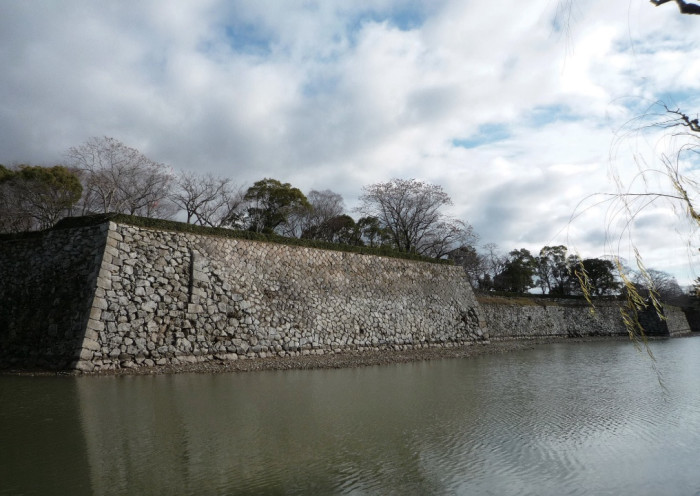
8. Angkor
Angkor is one of the most important archaeological sites in Southeast Asia. Extending over some 400 km2, including a densely forested area, Angkor Archaeological Park contains the magnificent remains of the different capitals of the Khmer Empire, from the ninth to the fifteenth century, including the famous Temple of Angkor Wat and, at Angkor Thom, the Bayon Temple. The Angkor complex represents the entire spectrum of Khmer art from the ninth to the fourteenth centuries, and includes a number of indisputable artistic masterpieces (e.g. Angkor Wat, Bayon Temple, and Banteay Srei). The Khmer art developed at Angkor had a profound influence over much of Southeast Asia and played a fundamental role in its distinctive evolution. The Khmer Empire of the ninth to the fourteenth centuries encompassed much of Southeast Asia and played a formative role in the political and cultural development of the region. Khmer architecture evolved largely from that of the Indian subcontinent, from which it soon became clearly distinct as it developed its own special characteristics, some independently evolved and others acquired from neighboring cultural traditions. The result was a new artistic horizon in oriental art and architecture.

Country : Cambodia
Location : Siem Reap Province
Inscription year : 1992
9. Hill Forts of Rajasthan(chittorgarh Fort)
This serial site, situated in the state of Rajastahan, includes six majestic forts. The eclectic architecture of the forts, some of which have a perimeter of many kilometres, bears testimony to the power of the Rajput princely states that flourished in the region from the eighth to the eighteenth centuries. Enclosed within defensive walls are major urban centers, palaces, trading centers and other buildings, including temples that often predate the fortifications within which developed an elaborate courtly culture that supported learning, music and the arts. Some of the urban centers enclosed in the fortifications have survived, as have many of the site's temples and other sacred buildings. The forts use the natural defenses offered by the landscape: hills, deserts, rivers, and dense forests. They also feature extensive water harvesting structures that are, for the most part, still in use today. The Hill Forts of Rajasthan exhibit an important interchange of Princely Rajput ideologies in fort planning, art and architecture from the early medieval to late medieval period, within the varied physiographic and cultural zones of Rajasthan. Although Rajput architecture shared much common ground with other regional styles, such as Sultanate and Mughal architecture, it was highly eclectic, drawing inspiration from antecedents and neighbors, and had a degree of influence over later regional styles such as Maratha architecture. The series of six massive hill forts are architectural manifestations of Rajput valor, bravery, feudalism and cultural traditions, as documented in several historic texts and paintings of the medieval and late medieval period in India.
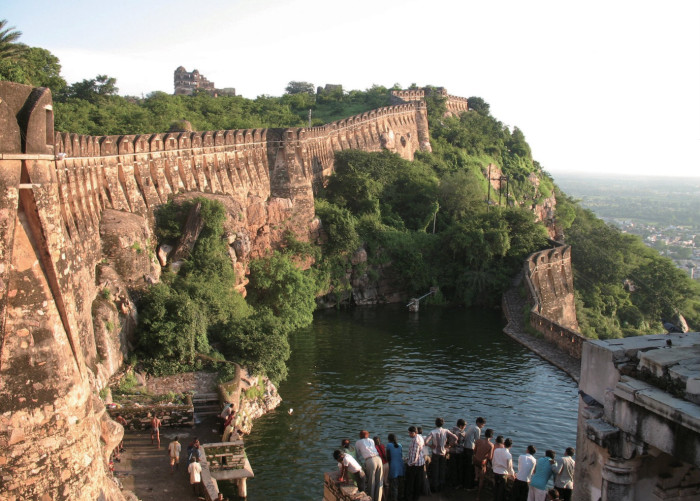
Country : India
Location : Rajastahan State
Inscription year : 2013
10. Historic Centre of Saint Petersburg and Related Groups
of Monuments
St. Petersburg, dubbed the 'Venice of the North' due to its numerous canals and more than 400 bridges, is the result of a vast urban project begun in 1703 under Peter the Great. Later known as Leningrad (in the former USSR), the city is closely associated with the October Revolution. Its architectural heritage reconciles the very different Baroque and pure neoclassical styles, as can be seen in the Admiralty, the Winter Palace, the Marble Palace and the Hermitage. In the field of urban design, Saint Petersburg represents a unique artistic achievement in the sheer ambition of the program, the coherency of the plan, and the speed of its execution. From 1703 to 1725, Peter the Great raised – from a landscape of marshes, peat bogs and rocks – architectural styles in stone and marble for his capital, Saint Petersburg, which he wished to be the most beautiful city in all of Europe. The ensembles designed in Saint Petersburg and the surrounding area by Rastrelli, Vallin de la Mothe, Cameron, Rinaldi, Zakharov, Voronikhine, Rossi, Montferrand and others exerted great influence on the development of architecture and monumental arts in Russia and Finland in the 18th and 19th centuries. The palaces of Peterhof (Petrodvorets) and Tsarskoye Selo (Pushkin), which were restored following their destruction during the Second World War, figure among the city’s most significant constructions. Saint Petersburg was twice directly and tangibly associated with events of universal significance. The construction of Saint Petersburg, between 1703 and 1725, symbolizes the opening of Russia to the western world and the emergence of the empire of the Tsars on the international scene. The Bolshevik Revolution triumphed in Petrograd in 1917 (the city had been renamed in 1914).

Country : Russian Federation
Location : Saint Petersburg
Inscription year : 1990
11. Historic Centre of Bukhara
Bukhara, which is situated on the Silk Route, is more than 2,000 years old. It is the most complete example of a medieval city in Central Asia, with an urban fabric that has remained largely intact. Monuments of particular interest include the famous tomb of Ismail Samani, a masterpiece of tenth-century Muslim architecture, and a large number of seventeenth-century madrasas. The example of Bukhara in terms of its urban layout and buildings had a profound influence on the evolution and planning of towns in a wide region of Central Asia. Bukhara is the most complete and unspoiled example of a medieval Central Asian town whose urban fabric has been preserved to the present day. Between the ninth and sixteenth centuries, Bukhara was the largest centre of Muslim theology, particularly Sufism, in the Near East, with over two hundred mosques and more than a hundred madrasahs.
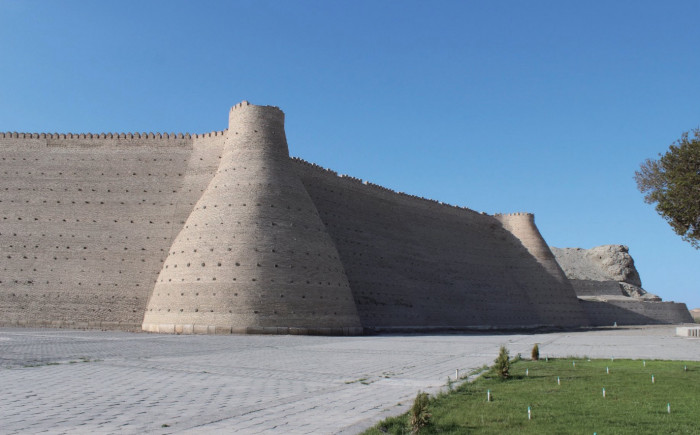
Country : Uzbekistan
Location : Bukhara region
Inscription year : 1990
12. Itchan Kala
Itchan Kala is the inner town (protected by brick walls some 10 m high) of the old Khiva oasis, which was the last watering hole for caravans before crossing the desert to Iran. Although few very old monuments remain, it is a coherent and well-preserved example of the Muslim architecture of Central Asia. There are several outstanding structures such as the Djuma Mosque, and the mausoleums, madrasas and two magnificent palaces built at the beginning of the nineteenth century by Alla-Kulli-Khan. With the coherent and well-preserved urban ensemble of the inner town of Khiva, Itchan Kala bears exceptional testimony to the lost civilizations of Khorezm. Several monuments of Itchan Kala constitute remarkable and unique types of architectural ensembles, built according to the ancient traditions of Central Asia. The attributes are outstanding examples of Islamic architecture of Central Asia. The Djuma Mosque, with its covered courtyard designed for the rugged climate of Central Asia, is unique in its proportions and the dimensions of its inner structure (55m x 46m), faintly lit by two octagonal lanterns and adorned with 212 columns. The madrasahs making up the social areas boast majestic proportions with simple decoration, forming another type of Islamic architecture specific to Central Asia. The traditional domestic architecture of Khiva represents an important example of human settlements in Central Asia by virtue of its design and construction. Its enclosed houses, with their courtyard, reception room with portico or avian supported by delicately sculptured wooden posts, and private apartments, are also an important attribute of the site that can be studied from the perspective of its eighteenth- and twentieth-century morphological variants.
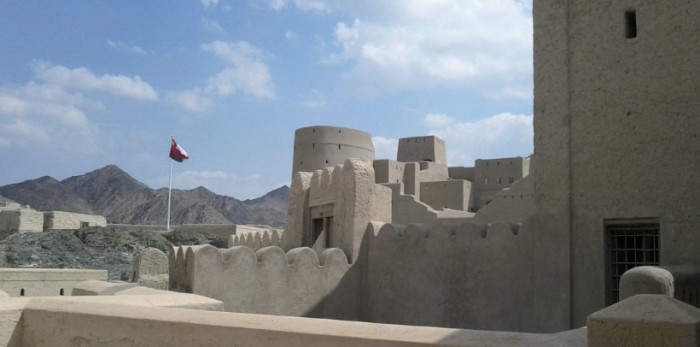
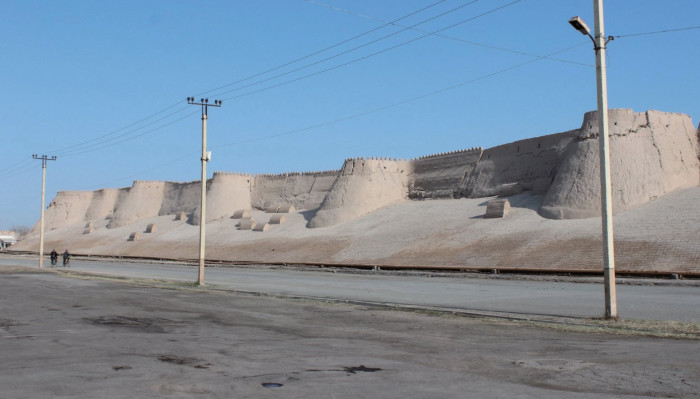
Country : Uzbekistan
Location : Khiva, Khorezm Province
Inscription year : 1990
<ggc의 모든 콘텐츠는 저작권법의 보호를 받습니다.>
- 글쓴이
- 지지씨
- 자기소개